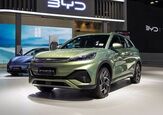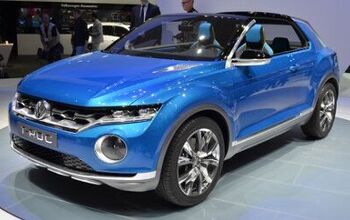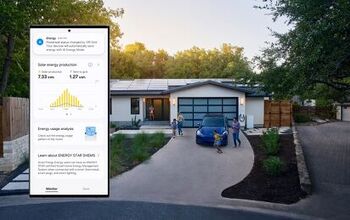Is This the Boring New Volkswagen T-Roc?

There’s a Terminator-like CGI image floating around that purports to show the upcoming Volkswagen T-Roc compact crossover. If it is VW’s new sub-Tiguan utility vehicle, and you’ve already seen the flashy T-Roc concept, prepare to be underwhelmed.
As we reported earlier this week, the T-Roc — which might adopt a new moniker in the U.S. — was reportedly green-lit for the American market after dealers gave it their seal of approval. VW needs utility vehicles, and a youthful, sporty little ride that encourages owners to drop their tops seems like just the ticket to stimulate interest in the brand. However, it seems the targa-top, pillarless two-door will lose all of those unique features before appearing on dealer lots.
If this image is indeed the T-Roc, well, those reports didn’t lie.
The shimmering specter appeared in a promotional video at the Geneva Auto Show, and its bulging fenders and short overhangs lend credence to rumors that it is the T-Roc. Reports out of Europe, where the T-Roc will launch later this year, claim the CUV will feature removable roof panels in place of a removable top. If true, expect no more glass than your average panoramic sunroof.
The model shown above appears extremely conventional, even going as far as adding roof rails and front-hinged rear doors; perfect for the crowded and competitive compact CUV segment, but hardly a buzz-worthy youthmobile. U.S. consumers can expect to see it in 2019. While VW hasn’t announced anything just yet, it’s probable that buyers will find a turbocharged 1.8-liter four-banger under the hood.
As it tried to flesh out its skimpy utility offerings, VW seems to be using every tool at its disposal. The T-Roc first appeared in concept form back in 2014, riding atop the MQB platform it shares with the Golf, but the automaker’s future holds more than one new offering. There’s also a chance we’ll see a larger crossover based on the new-for 2017 Atlas.

More by Steph Willems
Latest Car Reviews
Read moreLatest Product Reviews
Read moreRecent Comments
- 2ACL 2.slow + stick + major components serviced = many more miles of motoring if the next owner is even half as diligent. Not my cup of tea, but I could understand someone wanting to take this home.
- AZFelix In related news, the California Department of Public Health in cooperation with CARB is proposing a complete ban on new car sales by 2039. The agency director was quoted as saying "If it prevents just one death..." and "Think of the [non-aborted] children..." at a press conference. The DEA immediately classified Ozium Air Sanitizer spray as a Schedule I chemical/drug and applied for a yearly budget increase of $690 billion dollars to help prosecute their 'war on car freshness'.
- Master Baiter The 10 year maintenance cost should be normalized with respect to the vehicle cost. Of course a $150K Porsche or Range Rover is going to cost more to maintain than a $20K Camry.
- Paul 175k? Pffft not a chance. A VW with that mileage is an enormous bill waiting to happen.
- Turbo Is Black Magic Civic Si all the way… it’s the sweet spot of fun to drive, manual, decent MPG’s, no dealer markup BS. Especially in Canada where you can get heated seats.If you are in the US just buy the last gen Si… it’s still a vastly better car than the current one.


































Comments
Join the conversation
I wouldn't complain about "underwhelming" styling. The other direction gives you the Juke and the Toyota C-RH or whatever they call it. I prefer this.
I name thee Volkswagen Shenanigon.